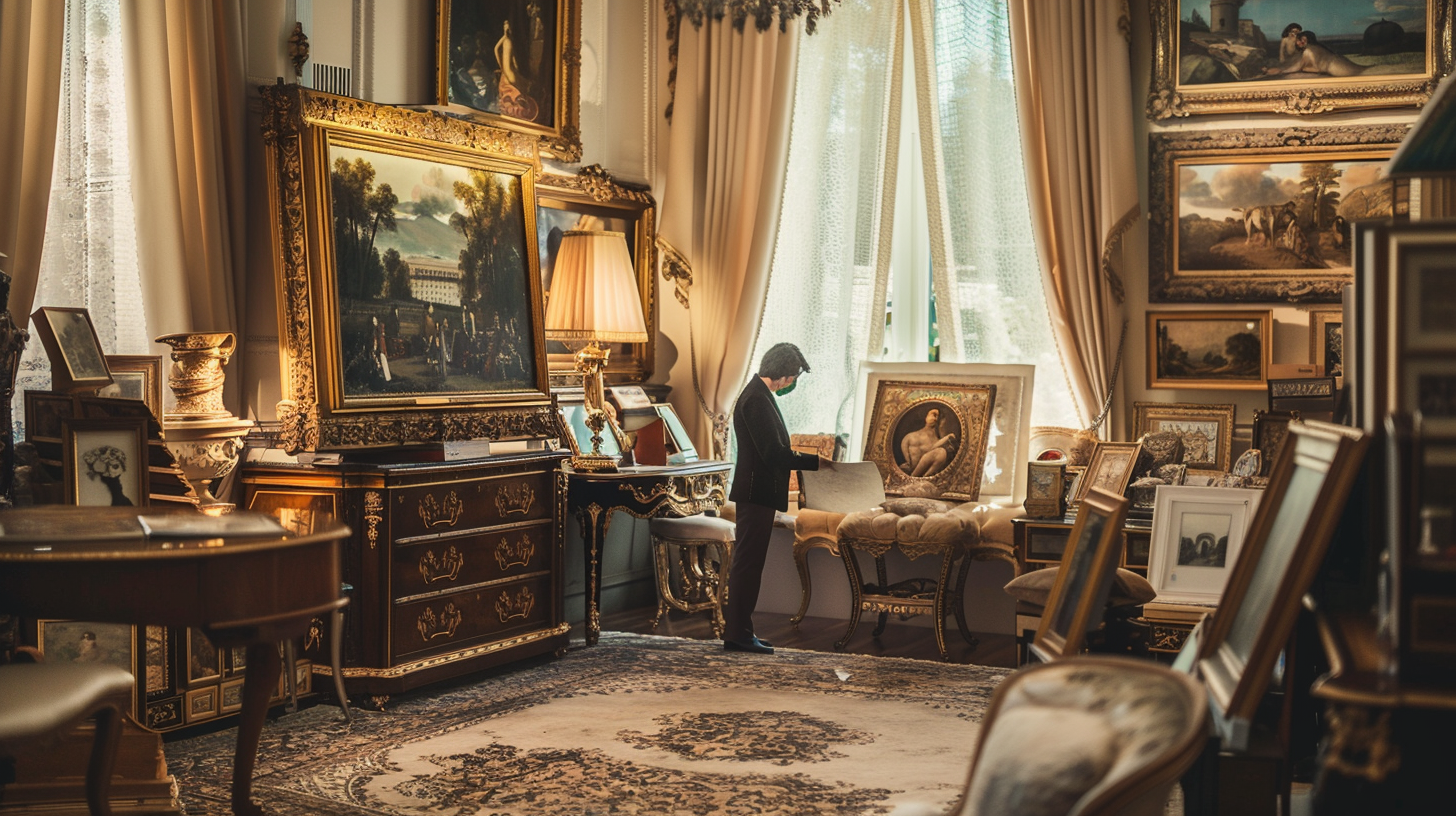When traditional credit options close their doors due to credit report inaccuracies, many people don’t realize their valuable art collections could be the key to accessing needed funds.
Art-secured lending has grown significantly in recent years, offering a practical solution for individuals who own valuable artwork but face challenges in the conventional lending market. What makes this option particularly attractive is that you can access capital without having to sell your cherished pieces—essentially gaining financial flexibility while maintaining ownership of your collection. More individuals are now turning to art as collateral to bridge the gap between asset ownership and liquidity needs.
For those with credit challenges, art as collateral shifts the focus from your credit history to the value of your assets. These loans typically evaluate the market worth of your artwork rather than your credit score, creating opportunities that might otherwise be unavailable. But how exactly does the process work? What types of art as collateral qualify? And what should you know about loan-to-value ratios and other requirements before using your art collection to secure financing? Understanding these aspects can help you determine if this increasingly popular financial option might be right for your situation.
Understanding Art as Collateral: Beyond Traditional Assets
Art-secured lending refers to the practice of using fine art as collateral to secure a loan. In this arrangement, borrowers pledge their artwork as security, allowing lenders to seize and sell the pieces if the borrower defaults on repayment obligations. This form of lending has evolved significantly over the past decade, moving from a niche service offered by specialty finance companies to a more mainstream financial option embraced by various lending institutions.
Not all artwork qualifies as suitable art as collateral. Lenders typically focus on pieces created by blue-chip artists—those with established reputations and strong sales histories at major auction houses. Works by contemporary masters like Jean-Michel Basquiat, Andy Warhol, and Gerhard Richter are often preferred due to their consistent market performance and liquidity. Mid-career artists with growing markets may also be considered, though usually at lower loan-to-value ratios. Importantly, decorative art, crafts, and works by unknown or emerging artists generally don’t qualify due to their unpredictable market value and limited secondary market demand.
The evaluation process for art as collateral is multifaceted and significantly more complex than assessing traditional collateral types. Professional appraisers with specific expertise in the relevant art category conduct thorough examinations to determine fair market value. They analyze factors including the artist’s market trajectory, the work’s condition, provenance (ownership history), exhibition history, and recent comparable sales. Unlike real estate or equipment, which have relatively standardized valuation methods, art as collateral requires specialized knowledge of art history, current market trends, and authentication techniques. This complexity is one reason why loan-to-value ratios for art-secured loans are typically more conservative than those for traditional collateral types.
When compared to traditional collateral like real estate, equipment, or inventory, art as collateral presents unique characteristics that influence lending practices. While real estate offers the security of land and physical structures with relatively stable values, art values can fluctuate dramatically based on changing tastes, artist reputation, and market conditions. However, blue-chip art often demonstrates remarkable value retention during economic downturns, sometimes even outperforming traditional investment vehicles. This counter-cyclical performance has contributed significantly to the financial sector’s growing acceptance of art as collateral as a legitimate asset class worthy of consideration in wealth management strategies.
The Art-Secured Loan Process for Credit-Challenged Individuals
The application process for an art-secured loan differs significantly from traditional financing, especially benefiting those with credit challenges. Initially, borrowers must compile comprehensive documentation about their artwork, including certificates of authenticity, provenance records, exhibition history, and previous sales information. Most lenders require recent professional appraisals from recognized experts or firms specializing in the relevant artistic period or style. Some lenders may accept appraisals conducted within the last 6–12 months, while others insist on new valuations specifically for the loan application.
Once documentation is submitted, specialized art lenders conduct their own due diligence, often employing in-house art experts or third-party consultants to verify the artwork’s authenticity, condition, and market value. This assessment typically includes physical inspection of the artwork, verification of provenance, and thorough market analysis to determine liquidity potential. Unlike traditional loans where credit history and income verification dominate the decision-making process, art-secured lenders focus primarily on art as collateral—its value, marketability, and authenticity. While some basic financial information may still be required, poor credit scores or past credit issues have substantially less impact on approval decisions.
The lending landscape for art as collateral encompasses various institutions with different approaches and specializations. Dedicated art lending companies like Athena Art Finance and Borro focus exclusively on art and luxury asset-secured loans, employing specialized art experts and offering tailored solutions. Private banks with art lending divisions, such as J.P. Morgan Private Bank, U.S. Trust, and Citi Private Bank, typically serve high-net-worth clients with substantial art collections, offering competitive rates but often requiring broader banking relationships. Auction houses like Sotheby’s and Christie’s provide advances against consigned artwork or loans secured by art as collateral not immediately intended for sale. Each lender type offers distinct advantages, with specialized art lenders generally providing more flexibility for credit-challenged borrowers since their underwriting focuses primarily on the collateral rather than the borrower’s financial history.
Steven Hawkins, Managing Director at J.P. Morgan Private Bank, explains the shift in focus that makes art as collateral valuable for those with credit challenges: “J.P. Morgan Private Bank takes a tailored approach to art-secured financing. We focus on well-documented, high-value artworks by established, blue-chip artists with a strong market presence. The focus lies on artworks that have a track record of sales and are recognized in the art market.”
Benefits and Opportunities of Art-Secured Financing
One of the most significant advantages of art as collateral is what industry professionals call “liquidity without liquidation.” This concept allows art collectors to unlock the financial value of their artwork without permanently parting with pieces that may hold both monetary and emotional significance. For individuals facing credit challenges due to report inaccuracies, this approach provides access to capital that might otherwise be unavailable through conventional lending channels. Rather than being forced to sell valuable collections during financial hardships, borrowers can leverage art as collateral temporarily while maintaining ownership rights and the potential for future appreciation.
Art-secured loans often feature more favorable interest rates compared to unsecured options available to borrowers with credit issues. While rates vary significantly based on the specific artwork, loan amount, and lender type, they typically range from 7–15% annually for specialized art lenders and potentially lower for private banking clients with substantial relationships. This compares favorably to unsecured personal loans for credit-challenged individuals, which can exceed 20–30% or may not be available at all. Additionally, art as collateral frequently offers flexible repayment terms, including interest-only periods and customizable repayment schedules that can be tailored to the borrower’s cash flow situation.
Beyond addressing immediate financial needs, art as collateral can serve as a strategic tool for building alternative credit history. Successfully managing and repaying these loans demonstrates financial responsibility that may help rebuild credit over time. The specialized nature of these loans also means they’re often structured with greater flexibility than conventional financing, allowing borrowers to negotiate terms that align with their specific circumstances. This adaptability is particularly valuable for those navigating complex financial situations resulting from credit report inaccuracies or past financial difficulties.
“Lending against art can offer a way to unlock liquidity without relinquishing ownership. Leveraging art as collateral ensures financial flexibility while keeping valuable collections intact,” notes Steven Hawkins, highlighting how this approach serves multiple financial objectives simultaneously.
Navigating Risks and Challenges
Understanding loan-to-value (LTV) ratios is crucial when pursuing art as collateral. Most lenders offer between 40–60% of the appraised value, significantly lower than the 70–80% commonly available for real estate. This conservative approach reflects the unique risks associated with art as collateral, including potential market volatility and liquidity challenges. Higher-value works by established artists with strong sales histories might qualify for higher LTV ratios, while emerging artists or more speculative works typically receive lower percentages. Borrowers should carefully consider whether the available loan amount meets their financial needs before proceeding.
During the loan period, lenders impose specific requirements regarding the artwork’s storage, insurance, and maintenance. Most lenders mandate professional art storage facilities with climate control, security systems, and proper handling protocols. Comprehensive insurance policies naming the lender as loss payee are required, often with specific coverage limits exceeding the loan value. Some arrangements allow borrowers to maintain possession of the artwork through specialized security arrangements and regular inspections, though this typically results in lower LTV ratios. These requirements add to the overall cost of the loan but are essential for preserving the value of art as collateral.
The art market’s inherent volatility presents significant challenges in art-secured lending. Unlike real estate or securities, art lacks standardized valuation metrics and transparent pricing. Market values can fluctuate dramatically based on changing collector preferences, artist reputation, and broader economic conditions. Lenders mitigate these risks through conservative LTV ratios and loan covenants that may include margin calls if the artwork’s value depreciates significantly. Borrowers should carefully consider their capacity to address potential margin calls or renegotiate terms if market conditions shift unfavorably during the loan term.

Legal considerations regarding ownership rights during the loan period require careful attention. While borrowers retain technical ownership, the lender holds a security interest in art as collateral that restricts certain actions without lender approval. This typically includes prohibitions against selling, donating, or otherwise transferring the artwork without first satisfying the loan obligation. Some lenders require physical possession of the collateral, while others allow continued display with appropriate security measures and regular monitoring. Borrowers should thoroughly review loan agreements with legal counsel to ensure complete understanding of their rights and restrictions throughout the loan term.



